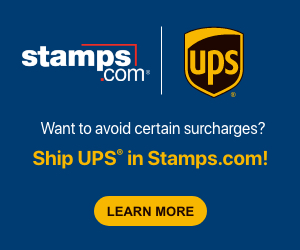Where some online retailers see challenges, others see opportunities. A number of online retailers find it a hassle to ship internationally and limit their consumer base to their home country. On the other hand, some online retailers have taken advantage of the international market and are very successful. Truth is, it’s not hard to ship abroad, especially if you’re shipping with the USPS. All you have to do is fill out one of three easy-to-use customs forms. As long as you know the basics — customs form types, how to fill them out, and how to submit them — you can breeze through your international shipments. So let’s get to the basics…
Where Do I Get USPS Customs Forms?
There are three ways to obtain customs forms:
#1 You can pick up USPS customs forms from the Post Office.
#2 On USPS.com, you can complete customs forms or order them and have them mailed to you.
#3 If you use online postage services, such as Stamps.com, you’ll have online access to automated USPS customs forms and the ability to fill out and print them.
What Are The Three Types Of USPS Customs Forms?
There are three different types of customs forms used for USPS international shipping. Each form is to be used for a specific type of shipment, so be sure you’re using the right form before you start filling one out. What are your three options?
#1 PS Form 2976, USPS Customs Declaration – CN22
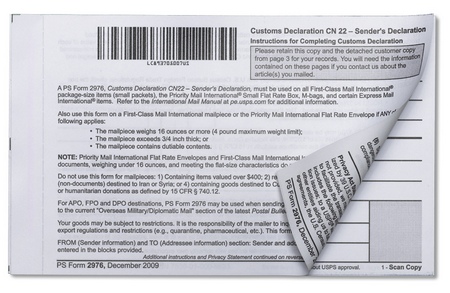
PS Form 2976 (also known as CN 22) – This customs form is commonly used with First Class Mail International and Priority Mail International for Flat Rate Envelopes and Small Boxes
- Typically for packages valued under $400
- USPS mail classes for this form: First-Class International, Priority Mail International, Priority Mail Small Flat Rate Boxes and Envelopes, certain Express Mail International and Airmail Bags
- This customs form is self-adhesive and can be attached to your package, or printed on thermal labels or regular plain paper if you’re an online postage customer.
- When printed on regular paper, place PS Form 2976 inside the Customs Form Envelope 2976E and attach the envelope to your package.
#2 PS Form 2976-A, USPS Customs Declaration & Dispatch Note – CP72
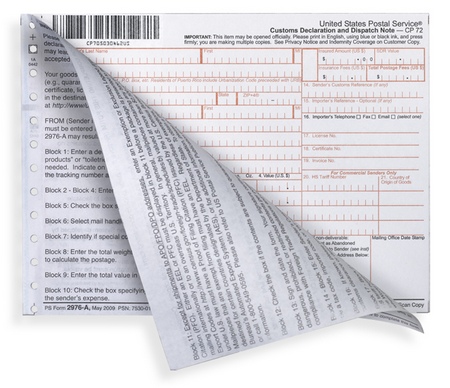
PS Form 2976-A (also known as CP72). This Custom Form is commonly used for regular Priority Mail International boxes or for items over $400 in value.
- Used for packages valued over $400
- USPS mail classes for this form: Express Mail International and all Priority Mail International packages, except for Flat Rate Envelopes and Small Flat Rate Boxes
- If you’re an online postage customer, this customs form must be printed on regular plain paper.
- When printed on regular plain paper, Place PS Form 2976-A inside the Customs Form Envelope 2976E and attach the envelope to your package. When using the traditional form, the same instructions apply.
#3 Commercial Invoice PS Form 6182
- Used for packages valued at $2,499 or less
- USPS mail classes for this form: Global Express Guaranteed packages
- If you’re an online postage customer, this customs form must be printed on regular plain paper.
- When printed on regular plain paper, place PS Form 6182 inside the Customs Form Envelope 2976E and attach the envelope to your package. When using the traditional form, the same instructions apply.
What Information Do I Provide On USPS Customs Forms?
The good news is USPS customs forms are self-explanatory. Each customs form contains the same information, it’s just packaged a little differently. You’ll need to include the contents, weight, value and what type of goods you’re shipping. Take care not to mark commercial products as gifts, as this is considered mail fraud and is prosecuted by law. (This is a common request from eBay buyers because marking the item as a gift greatly reduces tariff fees.)
What Do I Do With My Finished Customs Forms?
Once your international package is ready, it goes to the USPS. If you use online postage services (such as Stamps.com) you do not need to go to the Post Office and wait in line. Here’s how it works: Online postage software places an electronic round stamp on USPS customs forms. This stamp indicates that you are “known USPS mailer” and can give your package to a USPS daily mail carrier, place your package in any USPS mailbox, or drop off your package at any Post Office counter. Stamps.com customers also have the option of scheduling package pickups with their personal USPS carrier, which allows customers to process international packages from their home or office.
If you do not purchase your postage online, you’re required to present your international shipment to a Post Office employee so they can stamp your customs form.
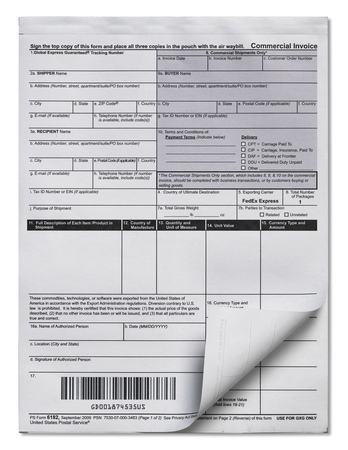



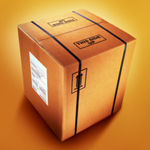
![[Infographic] Rock Your Back-To-School Sales & Marketing](https://www.ecommerceweekly.com/wp-content/uploads/2016/08/BTS-Featured.png)

